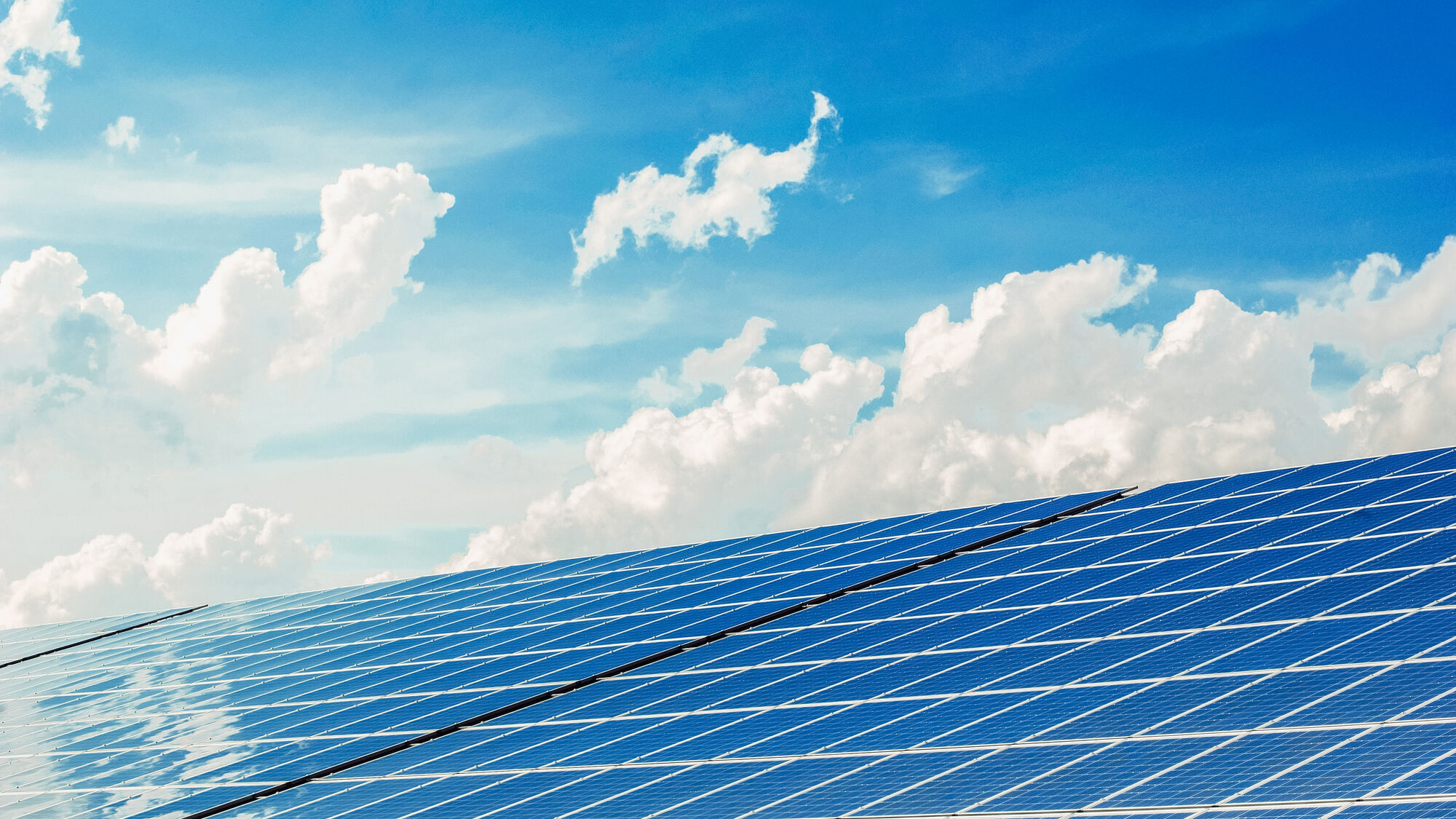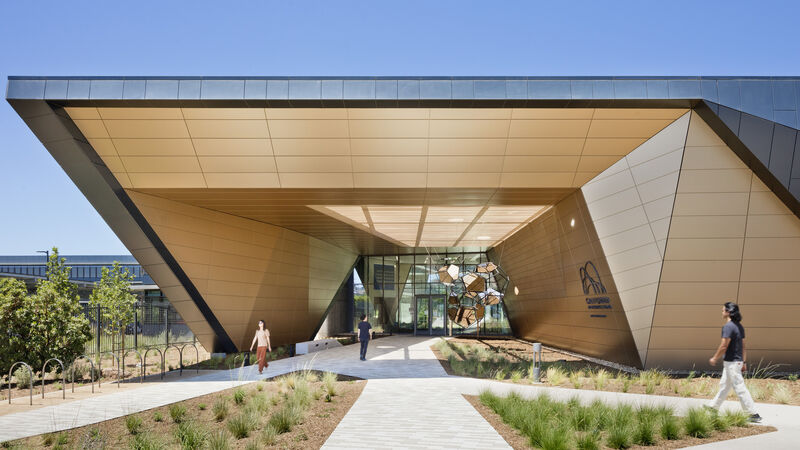
Achievements in Zero Energy
Zero energy, zero carbon. Different scales, different climates.
AEI brings deep design expertise and a comprehensive suite of energy modeling tools to help navigate and reliably envision the interaction of climate, program, occupants, building systems, and district energy systems. Focusing on exploration at each stage of the design process, these interactive tools provide the owner and the design team with meticulous, data-driven accuracy, yielding insights on how design characteristics and alternatives will impact energy use, carbon emissions, and cost.
Reflecting a firm-wide commitment to sustainable design, AEI offers a robust portfolio of zero energy and zero energy-related projects — each at different scales, in different locations. Highlighted in greater detail below, each project represents the culmination of advanced technology and tools, a collaboration-driven team approach, and unparalleled expertise in high-performance design.

Stanford University Energy Systems Innovation
Designed for a peak load of 28,000 tons of cooling and 350 mmbtu/hr heating, the Stanford Energy Systems Innovations (SESI) project represents one of the most efficient district energy systems in the world. The SESI program utilizes heat recovery chillers that — along with standard chillers and gas-fired, hot water generators for peak load requirements — capitalize on daily heating and cooling overlap to heat the campus and university hospital with recovered energy.
Two million gallons of hot water and ten million gallons of chilled water thermal energy storage accommodate high demand periods. The campus conversion from steam to hot water includes district energy heat exchanger stations at nearly 200 buildings across 20 miles of direct-buried, low-loss, hot water piping. As a beacon to the system it represents, the SESI operations building is designed to be zero energy, with on-site PV offsetting its operational energy and carbon.
- 68%
- carbon emissions reduction

California Air Resources Board, Southern California Consolidation
The California Air Resource Board (CARB) is one of the most advanced and prominent vehicle emissions testing and research organizations in the world. The nature of CARB’s research mission, regulating as-yet unregulated emissions constituents, demands high-performance precision laboratory environments to produce repeatable data, capable of operations in the hot, dry climate of Riverside.
CARB's Southern California consolidation project creates a new, state-of-the-art facility that not only effectively addresses operational demands and requirements but curree it will represent the largest, zero energy building nationwide.
Featuring an all-electric, grid-harmonizing design, AEI developed performance modeling tools for rapid system concept testing, validating a suite of climate-responsive systems strategies that exceeded the project's already aggressive Energy Use Intensity (EUI) target by 20 percent. The building's energy use will be offset by 3.75MW of photovoltaic panels on site. With high process loads and more than 100 electric vehicle charging stations across both staff and public parking areas, the project includes 1.5 MWh of battery storage that will optimize electrical demand and utility costs under a net-metering agreement. A comprehensive approach to water conservation, collection, and reuse will contribute to a nearly 50 percent reduction in required potable water use.
“It incorporates the highest standards of sustainability...and meets the exacting laboratory specifications we need to keep California at the forefront of our world-leading efforts to clean up our air and fight climate change.”

Montana State University,
Norm Asbjornson Hall
Norm Asbjornson Hall, leveraging a wide range of ground source heat pump technologies, is designed to consume zero heat from their steam plant, even throughout the unpredictable and frigid temperatures characteristic of Montana winters. The building utilizes heat energy from the sun to warm intake air, generates power with roof-top solar panels, and leverages passive lighting and ventilation to harness the cool, sunny climate. The ultra-low energy design positions this STEM engineering building as zero energy ready with initial phase of PV offsetting 14% of all building energy.
Norm Asbjornson Hall’s 104 geothermal boreholes (each 500 feet deep and 7 inches in diameter) store excess heat during colder periods, positioning the building to be the first of a district energy interconnected exchange loop serving the many energy-efficient buildings scattered across Montana State campus.
- 60%
- energy reduction

College of Lake County
The College of Lake County's new science and engineering building — featuring laser, photonics, and renewable energy programs — includes teaching labs, classrooms, offices, and support space. AEI energy modeling helped determine the most effective means to achieve substantial energy savings. With a projected EUI of 88 kbtu/sf, placing the project in a zero-ready status, the building is expected to use 66 percent less energy than the ASHRAE 90.1-2007 baseline, resulting in energy cost savings of 52 percent. The initial 56 kW PV array is anticipated to provide 61,000 kWh annually.
Advancing the institution's sustainability goals and decarbonization efforts, an AEI-designed, system-wide, geothermal system will provide heating and cooling to all campus buildings. The initial phase includes primary infrastructure and eighty, 500-foot deep boreholes, expandable to over 480 wells with an estimated 1500+ tons of heating and cooling capacity.
- 66%
- less energy

Green Technology Training and Enterprise Center (G-TTEC)
Combining established sustainable technologies in an effective, holistic system of planning and design, the 11,000-square-foot Green Technology Training and Enterprise Center in semi-rural Wisconsin may be the least expensive, net zero-ready commercial building in the country to date.
Energy loads are significantly reduced through optimal building massing, a high-performance envelope, operable windows, high-efficiency lighting, and active daylighting. Radiant heating and cooling and a 14-well, geothermal field became a feasible option for reducing energy consumption in a climate that ranges from 93°F to -26°F.
- 74%
- energy reduction